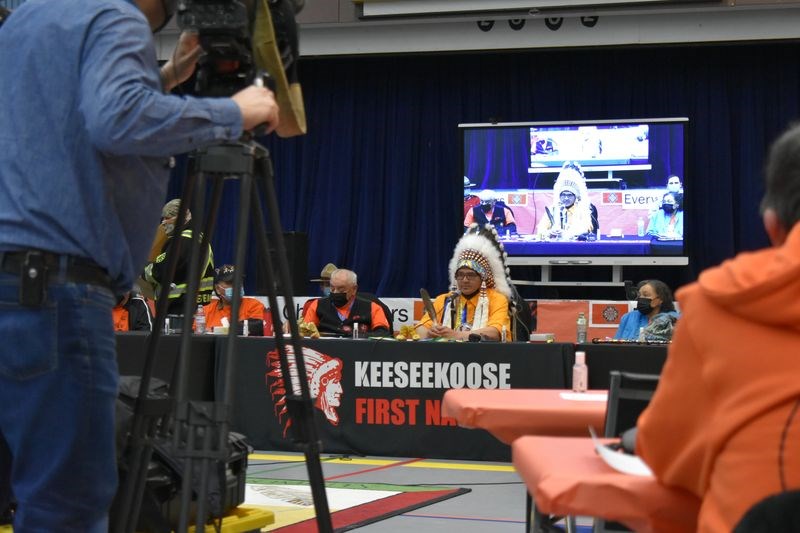KEESEEKOOSE FIRST NATION – During a press conference on the morning of February 15, leaders of the Keeseekoose First Nation gathered at the Keeseekoose Chiefs Education Centre to announce to their community, nation, and the world - that through ground-penetrating technology, they had found a total of at least 54 ground disturbances in the areas surrounding the sites that previously hosted the government-sanctioned, church-run schools known as Fort Pelly and St. Phillips.
Chief Lee Kitchemonia said that the discovery pointed to the oral history that had been painfully passed down from survivors of the two assimilation programs who had claimed for decades that significant emotional, physical, and sexual abuse had been inflicted on children as young as five years old.
“Honestly, I didn’t get much sleep,” said Kitchemonia. “Couldn’t stop thinking about these kids. I have kids and grandkids that age. I can’t imagine them never coming home. It’s so sad.”
Following the announcement by the search project manager and assimilation survivor, Ted Quewezance, photographic evidence was revealed – illustrating 42 potential graves on the Fort Pelly site and 12 on the St. Phillips site. Those in attendance included representatives from the RCMP, the Town of Kamsack, the Good Spirit School Division, Saskatchewan Lieutenant Governor Russ Mirasty, and members of the Keeseekoose First Nation, as well as the neighbouring Cote and Key First Nations. As they stood witness to the announcement and survivor testimony, many were visibly shaken, sobbing and wiping tears.
Joining Tuesday’s conference via Zoom was National Chief, RoseAnne Archibald, Federation of Sovereign Indigenous Nations Chief Bobby Cameron, and Indigenous Relations Minister, Marc Miller.
“It is time for all Canadians to listen, learn, and reflect on our shared history,” said Archibald. “We need to come together to find the healing path forward.”
Before welcoming Donald Bolen, Archbishop of the Regina diocese to speak at the press conference, master of ceremonies, Eugene Arcand, said there were four R’s that had to be addressed before reconciliation, describing them as “reclamation, repatriation, reparation, and restitution.”
In his address, Bolen said, “We are profoundly sorry for the role that Catholics played in the schools and the abuse that you suffered and the racism and the inter-generational trauma.” Bolen added that he agreed apologies were not enough and that the church would be in full support of assisting the nation in healing with actionable steps forward.
Saskatchewan Treaty Commissioner, Mary Culbertson, a member of the Keeseekoose First Nation said, “Residential schools are a product of broken treaty promises,” and throughout her career as a lawyer, she has witnessed “unbelievable barriers” in her work. “We are the only people with numbers still attached to us. We still have numbers. In what country...in what world, is that okay?”
Following the announcement, Saskatchewan Premiere, Scott Moe took to Twitter.
"As I said back in June, we knew other Saskatchewan First Nations would find unmarked graves and experience the same shock and despair as other First Nations across the country," he tweeted. "Know that today, and every day, Saskatchewan mourns with you."
Once winter conditions subside, Chief Kitchemonia said more investigative work will be done on the Keeseekoose homeland where the former assimilation programs took place.
This summer will also see the Cote First Nation begin investigating the grounds of the former Crowstand school near Kamsack.
According to the National Centre for Truth and Reconciliation:
“The Crowstand school was established near Kamsack, in what is now Saskatchewan, by the Presbyterian Church in 1889. In 1907 it was discovered that, when bringing runaway boys back to the school, the principal tied them together and required them to run behind a horse-drawn buggy. In 1914 the principal failed to take appropriate action when a hired hand was discovered to be having sex with students. In 1914 the department’s medical officer said that it was the worst school he had ever seen, and recommended immediate closure. The school was closed in December 1915."





